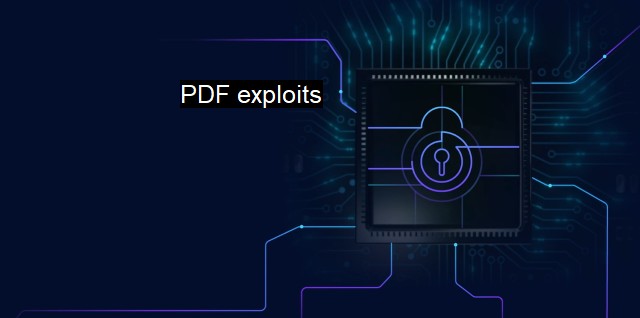What are PDF exploits?
The Elusive Threat: Understanding and Preventing PDF Exploits for Enhanced Cybersecurity
PDF exploits are vulnerability issues related to Acrobat Reader, the software most commonly used to open PDF files. This term, set in the realm of cybersecurity and antivirus protection, refers to these vulnerabilities being manipulated by hackers to damage, infiltrate, or compromise a user’s digital space.PDF, Portable Document Format, is a widely used format created by Adobe Systems. It delivers a simple, convenient way to share and view content, and possesses built-in security features such as password protection and file encryption. despite these protective elements, PDF files aren't entirely safe from cyber threats. Many of these threats materialize in the form of so-called PDF exploits.
Many people underestimate the potential harm embedded in digital files; unfortunately, PDF exploits have become a common method of spreading malware in cybersecurity attacks. While a PDF file may appear harmless and functional, contagious unpatched vulnerability, once activated (typically through opening the file), can execute malware that undermines the security of the target’s computer system.
Several different methods can be employed, but the most common form of the PDF exploit is a classic buffer overflow attack. In simple terms, a buffer overflow happens when data exceeding the buffer's capacity is inputted into the system, causing it to overflow. This overflow "spills" into other buffers, overwriting them, and potentially allowing arbitrary code execution. As a result, it leaves the cybersecurity door wide open for infections.
Attackers take advantage of buffer vulnerabilities hidden within an innocent-looking PDF file. Corruption of the data structure takes place through a series of malicious JavaScript injections, enabling overwrite permission on certain regions and executing arbitrary code. This code typically contains a payload that can lay dormant for a specific period, only ‘going active’ once the malicious conditions satisfy its trigger settings. In several cases, this payload involves a ransomware which locks the computer up, forcing the user to pay a ransom to unlock it.
Destination tracking files are another common exploit, whereupon a diagnosed PDF will redirect a user to a different specified internet address, typically through URL manipulation. Once redirected, the victim unsuspectingly harbors harmful digital content.
Alarming as it may sound, there are measures available to combat these cybersecurity threats. Updated antivirus software is the first line of defense in detecting and eliminating such exploits. Most antivirus software scans PDF attachments in emails before they are opened, making them less vulnerable to PDF exploits.
Adobe Reader offers in-built protective measures. Just as PDF exploits abound, so do patches and updates designed to counteract them. Regularly updating your Adobe software and ensuring that it always runs on the latest version is a practical preventative measure against these types of attack.
All JavaScript functionalities of Adobe can also be disabled, as another protective response against the execution of PDF targeted attacks, though it should be noted this could affect the capability of some PDF features that depend on it. Users should only download or open PDF documents from reliable sources as additional defense.
The critical element to remember is this: The domain of cybersecurity constantly evolves, which means that both threat and counter-measure continually adapt. Staying educated about potential threats, maintaining an updated antivirus software, and embracing solid security practices can help ensure your digital environment minimizes vulnerability potential to these potentially damaging PDF exploits.

PDF exploits FAQs
What are pdf exploits?
Pdf exploits are malicious codes that are embedded into PDF files, which can be triggered when the file is opened. These exploits can be used by cybercriminals to gain unauthorized access to a system or to execute other malicious activities.How do pdf exploits work?
Pdf exploits work by exploiting vulnerabilities in the PDF software, which can allow for the execution of malicious code. This can be achieved by adding malicious JavaScript, embedding an infected file or by making use of an insecure feature of the PDF file format.How can I protect myself from pdf exploits?
To protect yourself from pdf exploits, you should ensure that you have updated antivirus software installed on your system. Additionally, you should only open emails and PDF attachments from trusted sources, and ensure that your PDF software is always up to date.What are the consequences of a pdf exploit?
The consequences of a pdf exploit can range from the theft of sensitive data to a complete takeover of your system by a cybercriminal. This can cause significant financial loss, reputational damage, and can even lead to legal issues. It is, therefore, critical to take all necessary precautions to protect your system from pdf exploits.| | A | | | B | | | C | | | D | | | E | | | F | | | G | | | H | | | I | | | J | | | K | | | L | | | M | |
| | N | | | O | | | P | | | Q | | | R | | | S | | | T | | | U | | | V | | | W | | | X | | | Y | | | Z | |
| | 1 | | | 2 | | | 3 | | | 4 | | | 7 | | | 8 | | |||||||